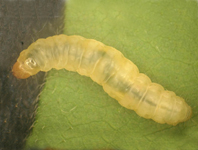Abstract
Five new species of the new taxon Brunetorhynchus n. gen. are described: B. deconincki n. sp., B. microstylis n. sp. and B. complicatus n. sp. are from the Mediterranean, B. canariensis n. sp. is from the Canary Island Lanzarote, B. cannoni n. sp. is from the Australian East coast and one species from the Galapagos, formerly described as Limipolycystis spec., is transferred to the new genus as B. dubius n. sp.. As in Limipolycystis, these species have a single stylet, (accessory stylet type II), an accessory secretion vesicle (type II) and a prostate vesicle (type III) in the male atrium, although the latter vesicle is absent in some species. Unlike the species of Limipolycystis, where the seminal receptacle is a sclerotized tubule, the species of the new taxon have a pear-shaped seminal receptacle on the oviduct.

